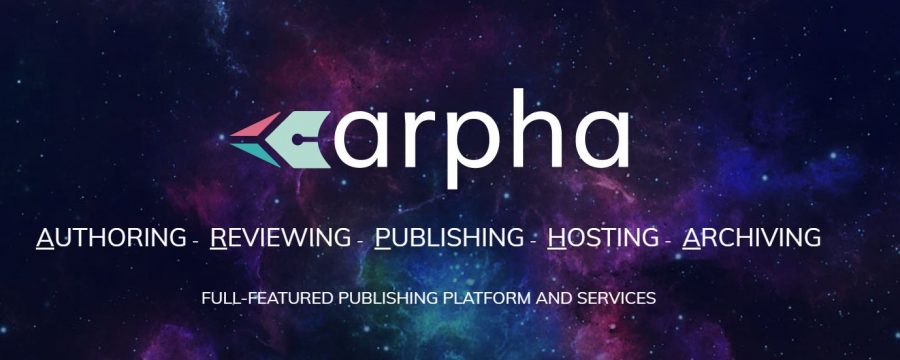Originally developed by scholarly publisher and technology provider Pensoft to cater for the needs of its very own journal portfolio, ARPHA Platform is now available as an independent publishing solution to publishers, societies and institutions seeking a new, technologically-advanced and highly-customisable home for their journals.
Below, we’ve listed the top 15 features at ARPHA that have so far persuaded over 60 open-access scholarly journals from around the globe to choose and keep on using our publishing platform.
(1) End-to-end software platform & human-provided services
With ARPHA, a scholarly journal no longer needs to approach different vendors, in order to manage its publishing processes. The platform provides an authoring tool (optional) and submission interface, while also supporting peer review, production, publishing, hosting, indexing, archiving and content dissemination.
As a result, all journal users (i.e. editors, reviewers, authors, layout managers and linguistic editors) can work within a single online environment, where they can benefit from:
- one-stop entry and unified interface from the start to the end of the publishing process;
- reduced manuscript turnaround times;
- in-built tools for monitoring and control at all stages of the publishing process;
- reduced costs and optimised cost/quality ratio
- data security and GDPR compliance.
(2) White-label and (co-)publishing
With ARPHA, a journal is not necessarily associated with the platform’s developer and owner Pensoft. Our white-label solution allows for the journal to be published under its own logo and imprint, including those of its publisher, society or institution.
Alternatively, some journals, especially starting titles, might rather be (co-)published by Pensoft, where they can benefit from better recognition, promotion and development as part of the publisher’s portfolio. For example, a journal’s outputs might be more likely to appear as related content from a relevant Pensoft journal through social media, browsers or newsletters.
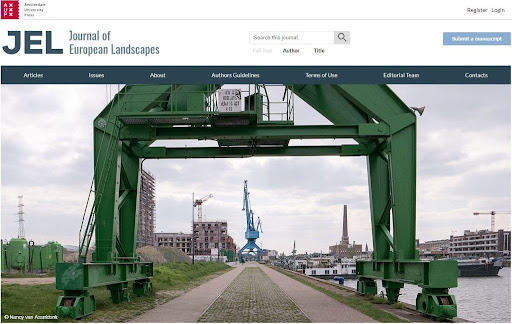
Use case I: Being an internationally recognised publisher, the Amsterdam University Press (AUP) opted for the white-label solution of ARPHA. To date, the publisher has moved three of its journals to the new platform (Maandblad voor Accountancy en Bedrijfseconomie, Journal of European Landscapes and Heritage, Memory and Conflict Journal), all of them benefiting from an individual design that fully honours their identity as part of the AUP’s journal portfolio, while at the same time, featuring the modern look and feel that comes with ARPHA.
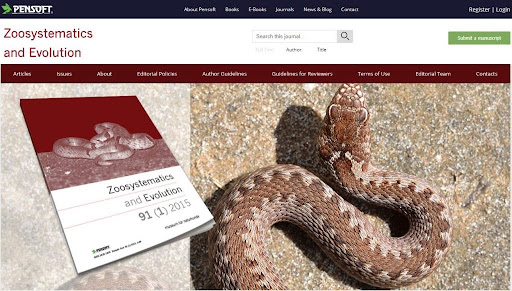
Use case II: Alternatively, the Museum für Naturkunde Berlin (Natural History Museum of Berlin) made the decision to flip to open access and modernise their historical journals Deutsche Entomologische Zeitschrift and Zoosystematics and Evolution with ARPHA under the strong publishing brand of the platform’s mother company, Pensoft Publishers.
(3) Operational customizability
On top of its full-featured publishing solution, ARPHA’s team and our partners offer a wide range of software integrations and human-provided services, including editorial management, customer support, and assistance in indexation, journal development, marketing and science communication. Selected on a mix-and-match basis, they can perfectly align with the journal’s existing workflows, future needs and budgetary requirements.
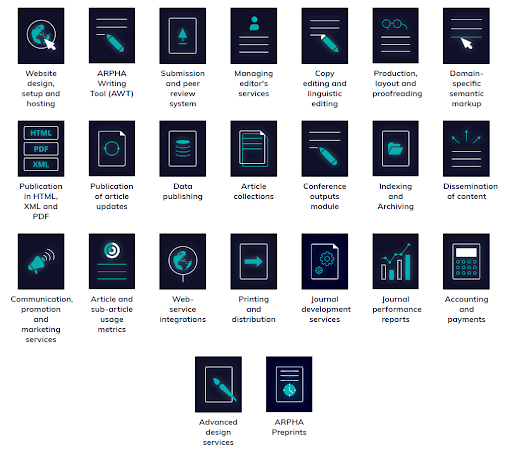
Use case I: Where journals already maintain their own editorial and/or production staff, they can opt to use ARPHA’s software platform in part and keep some of the work (e.g. editorial management and production) in-house. For example, the Plant Sociology journal of the Italian Society for Vegetation Science (SISV) decided to go for ARPHA’s ADVANCED pricing model, while continuing to use their own copy-editing and typesetting services, leaving to ARPHA the building and maintenance of the entire editorial management and publishing platform, along with the highly specialised work on XML tagging and semantically-enhanced publishing. As a result, the journal achieved a quick technological modernisation, while significantly optimising its operational costs, allowing authors to publish with APCs as low as €350 (discounted at €250 for society members).
Use case II: When the European Science Editing (ESE) journal by the European Association for Science Editing (EASE), got in touch with our team about possible partnership, we agreed to provide the platform for free, because of the invaluable role of the Society in improving and maintaining the quality and integrity of scientific publishing in Europe. By then, EASE had already adopted their own approach to typesetting their articles into PDF format, and preferred not to use the HTML format for their content, thus leaving only the XML publishing to ARPHA’s team. However, they remain able to upgrade to full-text HTML and XML publication at any point in the future. At the time of writing, ESE is using ARPHA’s BASIC pricing plan and operates with a Diamond Open Access publishing module.
(4) Flexible pricing plans
In support of transparency in academia, we’ve made sure that the ARPHA’s cost structure is publicly available on the platform’s website. There, potential clients may find a detailed list of the software modules and human-provided services featured in each pricing plan, including opt-in services.
To better illustrate how much it costs to run a journal on ARPHA Platform, we’ve calculated a few exemplary scenarios for a journal’s annual publishing costs, depending on its volume of content:
| Exemplary journal | Basic | Advanced | Premium |
| 2 issues 20 articles per year | € 4,450 | € 8,850 | € 12,850 |
| 4 issues 40 articles per year | € 6,050 | € 14,850 | € 22,850 |
Use case I: Check List is a large international journal popular with scientists from the Global South. It sought an affordable publishing venue for its authors, while providing them with a modernised and technologically-advanced platform. ARPHA elaborated a custom business model for Check List based on PDF-only publishing, but providing distribution of metadata in XML and HTML, thus allowing the Article Processing Charges (APCs) to be reduced to €120-€150 per article.
Use case II: The journal Evolutionary Systematics of the University of Hamburg is published on ARPHA under the conditions of a fixed yearly budget, which does not need to be calculated on the basis of the number of articles published per year. ARPHA customised a business model, based on a fixed number of pages published each year, which allowed for flexibility in publication of articles of different size within the yearly limit, while keeping the costs in accordance with the planned budget.
Use case III: At the time of our discussion with the Swiss Entomological Society, the society had been publishing its historical journal Mitteilungen der Schweizerischen in print-only black-and-white ever since the mid-19th century. Having discussed and finalised their publishing solution, the journal was re-launched in November 2017 under the name Alpine Entomology on its own ARPHA-powered website and sporting a full set of the latest technological advancements in scholarly publishing, including semantically enhanced XML, HTML and PDF. Yet, the costs for publishing were still well below the allocated by the society budget, even when we added the yearly printing of 300 full-colour journal copies to be distributed to the members of the society.
(5) Various business & operational models
While we do support Diamond Open Access, we do realise that journals do not always rely on external financial support generous enough to support their survival in the long run. This is why we offer to our clients a range of several business models:
- Diamond Open Access – all costs are covered by an institution, society or third party, so that the authors publish for free.
- Mixed model – the costs can be covered partially by an institution, society or third party, so that the authors are only charged with a fee as small as a fraction, compared to the average APCs in the industry.
- APC-based income model – a society or institution may set their APCs so that they cover the production costs or even add a surplus to support their financial sustainability.
- Differentiated groups model – some authors can publish for free (e.g. staff or society members), others can benefit from discounts or waivers (e.g. authors in low-income countries) and a third group may pay full APCs.
- Custom-fit models that can be elaborated together by the journal and ARPHA.
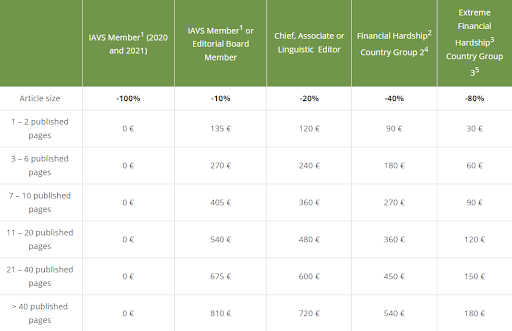
Use case: In 2020, the International Association for Vegetation Science (IAVS) expanded their journal portfolio by launching Vegetation Classification and Survey. Their aim was to achieve financial sustainability for the journal within three years. Thanks to ARPHA’s integrated elaborate and high-tech accounting and payment modules, we’ve set up their publishing solution to provide a quite complex and highly-automated APCs model, where society members enjoy full waivers in 2020 and 2021, and discounts in the years after. Various discounts and waivers are also applicable for journal editors and authors from different groups of low-income countries, based on the World Bank classification. As a result, the journal is expected to become cost-neutral for the Society or even to bring in a small income for it, while offering APCs that are two to three times lower than those charged by large commercial publishers.
(6) Language flexibility
While it’s become a standard for scholarly articles to be published in English, at ARPHA we do realise that there are still journals – including highly renowned and historic titles – that would rather have their content available in the language of their major audiences. This is why we’ve designed ARPHA to support bilingual solutions at interface, metadata and content levels.
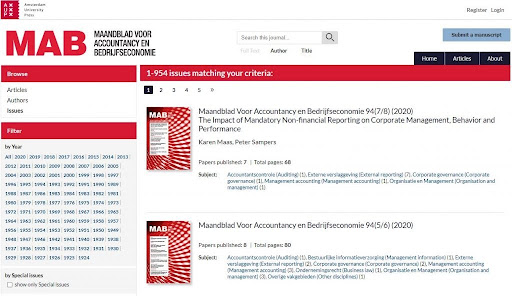
Use case I: The journal Maandblad voor Accountancy en Bedrijfseconomie of the Amsterdam University Press transitioned to open access and XML publishing on ARPHA in 2018. The journal wanted to keep the metadata and website interface exclusively in English, so that it is generally understandable to the international audience, but at the same time, the main content and journal’s news announcements to be published exclusively in Dutch. The result was more than satisfactory for the editors, authors and readers, especially after ARPHA uploaded the journal’s historical content (since 1924) and made it searchable and discoverable at article level on MAB’s new website.
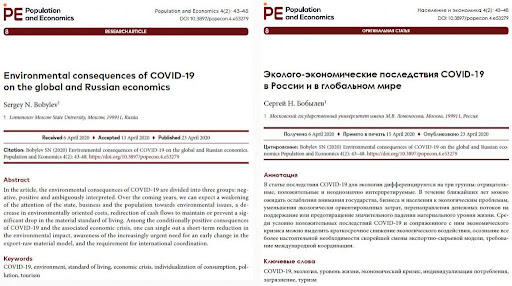
Use case II: The journal Population and Economics, published by the Moscow State University, was established as an international journal publishing exclusively in English, while also offering its content in Russian to the vast community of Russian economists and population geographers. ARPHA created a special solution for formatting and publication of a Russian version of all articles, identical to the primary English text and formatted according to the journal’s design standards. The Russian version is published as PDF under the same DOI as the English version and under English Language metadata only; a special statement is included in the Russian version to be cited with its original English metadata to avoid splitting the citation counts between the two language communities.
(7) Advanced semantic enhancements of content
Arguably the most enjoyed by our journals’ Editors-in-Chief and managers high-tech feature, the advanced semantics publishing module allows tagging and enhancement of content and the development of multiple interactive tools linked to the article’s content. While the module has a vast set of functions elaborated specially for the needs of the Biology, we are ready to develop a similar function for any field on demand.
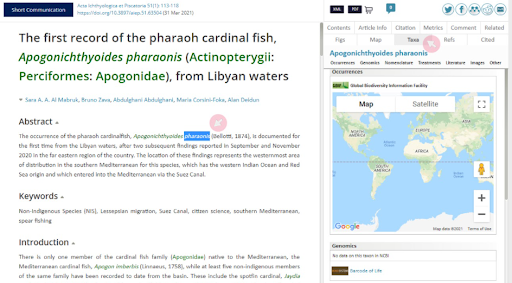
During the production stage, a manuscript’s content undergoes semantic mark-up, where various text elements are linked to related sections (e.g. in-text citations link to figures, tables or supplementary files) or externally sourced information (e.g. biological taxon names link to occurrences maps or treatments in the literature). Then, the published article allows for readers to visualise additional information right next to the text they are currently reading, so that they can easily contextualise the findings with no need to navigate away from the webpage.
Semantic enhancements currently at use on ARPHA Platform include:
- Referenced publications
- Citations
- Figures
- Tables
- Supplementary materials
- For biological taxa: occurrences, genomics, nomenclature, literature treatments, images
(8) Machine-readable (XML) publications
These days, there are various tools and platforms already in existence to do the search and delivery of research information for us. However, in order to fully use these functionalities, publishers need to first ensure that the content they publish can in fact be found and ‘read’ by those computer algorithms.
To address this issue, in addition to PDF and HTML formats, ARPHA publishes all journal content in XML. Additionally, machine-readability allows for key elements (e.g. images, nomenclature, occurrence records) from within the article’s text to be automatically fetched and deposited at relevant databases.
(9) Automated indexing & archiving
Given today’s information and data deluge, we cannot rely exclusively on our clients’ audiences to keep tabs on each journal at all times. On the contrary, a great part of a journal’s readers access content via various aggregators of information.
Hence, indexing and archiving of published content at various databases is a must if we wish to make sure that scientific results are permanently preserved and efficiently disseminated. Thanks to ARPHA’s fully-automated indexing and archiving module, all journal content is instantaneously distributed on the day of its publication via web services.
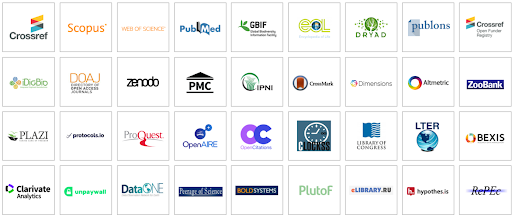
While some indexers and archivers (e.g. DOAJ, Publons, Zenodo) are integrated with a journal as soon as it completes its transition to the platform, provided the journal’s scope aligns with the one of the database, others (e.g. Scopus, Web of Science) may require for the title to first cover specific criteria. Once again, ARPHA’s team is glad to step in and help with advice on how those requirements can be best addressed, and even submit the necessary application forms on behalf of the journal.
(10) Personal approach in technical support and consultancy
Journals joining ARPHA enjoy a personal, reply-within-a-business-day, approach from a designated team member and benefit from operational training and technical support included in all pricing plans. The platform also offers consultancy and support in journal development, indexing & archiving and marketing & promotion. All these services are elaborated in fully transparent and flexible plans, so that editorial boards can opt for services they really need, in order to improve the journal’s performance.
Use case I: When the journals Russian Journal of Economics and Population and Economics moved to ARPHA, the editorial boards wanted to make the most of the new platform and its features, with the shortest possible uptake time for their in-house staff. As a result, a two-day training was organised for the editorial teams in their Moscow offices, where they received an induction to the platform’s technical features, insights on how to make the most of its workflows and complementary training in journals’ promotion and PR. This induction has led to the requirements of the Editorial Board for these journals being met and successful adoption of the ARPHA platform.
Use case II: Earlier this year, we organised and held an online meeting for the editorial board at our client journal One Ecosystem, in order to help the journal’s team refine its development strategy and set out its next goals to becoming a go-to publication venue for ecologists. There, we brought together the bright and enthusiastic editorial team and updated them about the latest trends in One Ecosystem’s performance and the ARPHA features and services available at their disposal. Thus, we successfully laid the groundwork for an engaging and fruitful discussion and future actions.
(11) Promotion and science communication services
While talk about the power and value of science communication is growing stronger by the day, at ARPHA, we’ve been putting special efforts in popularising the content our client journals publish amongst the scientific community and the general public for over a decade. To do so, ARPHA’s PR team relies on the company’s and journals’ own social media channels, ARPHA’s and Pensoft’s blogs, specialised science and academic news platforms (e.g. Eurekalert, Knowledgespeak), as well as personal contacts with journalists from the world’s top news media.
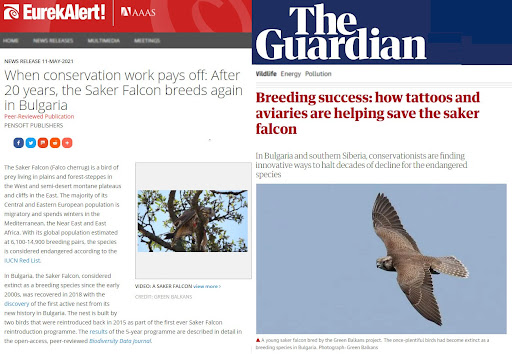
Use case I: Earlier in 2021, we did a PR campaign around a study published in Biodiversity Data Journal that reported on the successful conservation efforts of the Green Balkans NGO to bring back breeding populations of the Saker Falcon in Bulgaria. The press announcement posted to the top science news platform Eurekalert and sent to ARPHA’s media contacts triggered multiple headlines internationally, including a story in The Guardian.

Use case II: At ARPHA, we encourage our customers to not only share news about the scientific discoveries their journals publish, but also news about the journal itself. Having transitioned three of Senckenberg Nature Research Society’s flagship journals to ARPHA in a joint co-publishing venture with Pensoft, we announced the news about our collaboration and explained what this brings to the journals’ users across our channels, i.e. Knowledgespeak, Eurekalert, ARPHA’s and Pensoft’s blogs and social media channels.
(12) Multiple real-time usage metrics
To demonstrate and track the real-life visibility, outreach and scholarly impact of each published article, ARPHA-hosted journals accommodate a range of metrics on both article and sub-article level.
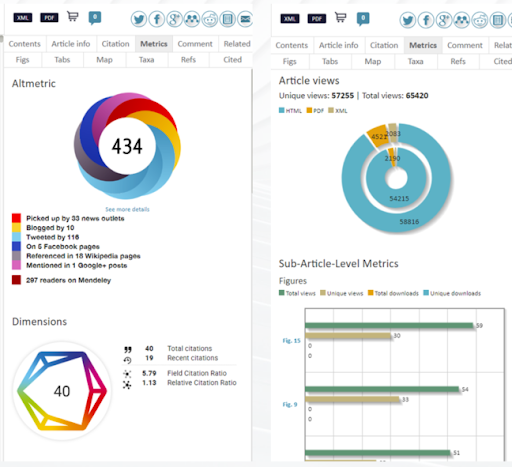
Our own statistics provide a quick, real-time report for article total and unique views by format, in addition to a total and unique clicks on each figure and table. Thanks to our partnership with Altmetric, each paper also displays an instantaneous insight into its mentions on news media, blogs, social media, Wikipedia etc. from across the Internet, while the colourful badge from our collaborators at Dimensions links to the article’s citations in scholarly articles, policy documents, grants, clinical trials and others.
(13) Journal performance statistics and reports
Reporting and monitoring of journal performance is the cornerstone in understanding the highs and lows of a journal and tailoring its future development strategy. So, ARPHA Platform provides various statistics to Editors-in-Chief and Managing editors accessible from their user dashboards within the ARPHA environment.
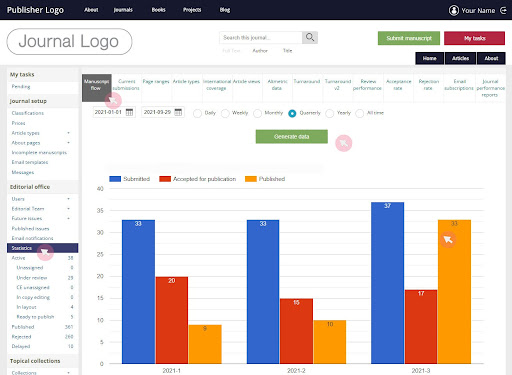
Hence, they can select a specific time period and visualise detailed data and graphics illustrating trends in how many manuscripts are submitted and published, how long it takes to review, accept and publish articles on average, where the majority of authors are based and many others. In addition, our team emails a report with all key statistics to each journal’s Editor(s)-in-Chief and Managing editors twice a year.
(14) Multi-purpose platform
Apart from journals, ARPHA Platform and its services can also be used for academic books, conference abstracts or full-text papers, preprints and institutional documents. For all these different products, ARPHA can create multifunctional platforms for institutions and societies operating under the customer’s logo and branding.
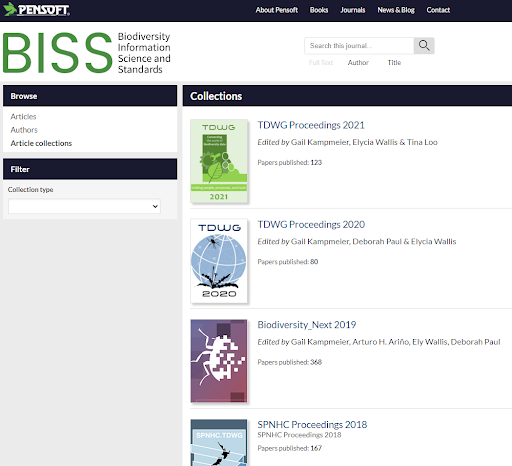
Use case I: In 2016, we were approached by the Biodiversity Information Standards (TDWG): a non-profit scientific and educational association, working towards the development of standards for the exchange of biodiversity data, for the purposes of biodiversity informatics. They wished to find a way to collate and permanently preserve the outcomes of their annual conference, in order to ensure that valuable outputs presented at and inspired by the events remain discoverable and freely accessible well after the conference has concluded. Eventually, ARPHA set up the journal Biodiversity Information Science and Standards (BISS), where conference participants can submit their abstracts prior to the conference rather than emailing them to the conference organisers or uploading them to odd single-use portals. As a result, the abstracts are published similarly to the articles in any ARPHA-hosted journal: in PDF, semantically enhanced HTML and machine-readable XML; with their own DOIs; and featuring references, figures and tables, also stored as data. Apart from conference abstracts, BISS also publishes research posters and presentations, case studies, forum papers, software descriptions and more.
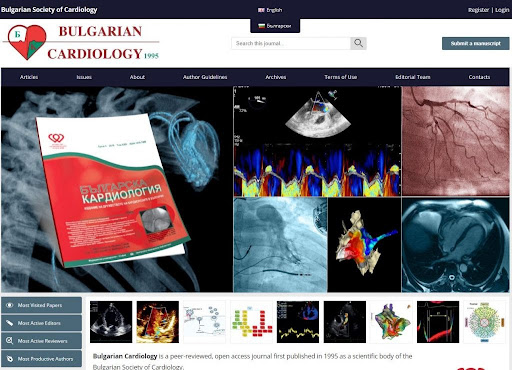
Use case II: The Bulgarian Society of Cardiology transferred its 25-years old journal Bulgarian Cardiology on ARPHA in 2019. The journal is multilingual and publishes articles in English, Bulgarian and occasionally in other European languages. The new ARPHA-designed website of Bulgarian Cardiology provides a bilingual interface and the possibility to publish both English and Bulgarian language metadata and articles in either of the two languages. Shortly after the journal’s launch, the Society commissioned a new society website following the journal’s corporate design, yet providing a wide variety of other features to present the Society’s activities, publication of various documents, news items and so on. Both websites are available through a platform built on the Society’s domain address bgcardio.org.
(15) New integrations and tools implemented continuously
While at ARPHA we’re doing our best to cater for all our clients and their own users by providing a versatile list of customisable services, we do realise that one’s needs and wants change over time and so do the requirements and expectations of the academic publishing industry.
This is why we regularly develop and implement new features and services, and deliver them to our clients either by default or on an opt-in basis. To further enrich our portfolio of services, we also keep an eye on the latest innovations in scholarly publishing, and seek out partnerships whenever we identify something that might improve our users’ experience.
Check out our earlier blog post to find more about the top features we introduced at ARPHA in 2020:
- ARPHA Preprints
- Dedicated editorial workflow for Special Issues and Topical article collections
- Editor and reviewer application form
- Journal performance statistics
- Journal performance reports
- Workload statistics for reviewers and subject editors
- Review rating
- Contributor roles for co-authors
- Easy update of user expertise
- Integration with the research discovery app Researcher
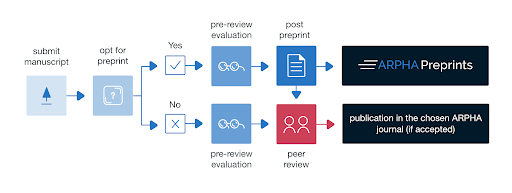
Use case I: While preprints have been gaining traction in recent times, the COVID-19 pandemic suddenly put an enormous pressure on researchers to share their scientific results as early as possible. It was then that we put the development of our own much-anticipated preprint platform on high priority with the aim to provide a fast-track publication of preprints for authors that have selected an ARPHA-hosted journal for their studies. We offered a seamless integration with ARPHA Preprints to all our clients as an opt-in service at no additional charge. The journals that accommodated it, provide to their authors the opportunity to post their manuscripts as preprints upon submission at the click of a button, with no need to reformat their submission files.
Find more about ARPHA Preprints on our blog.
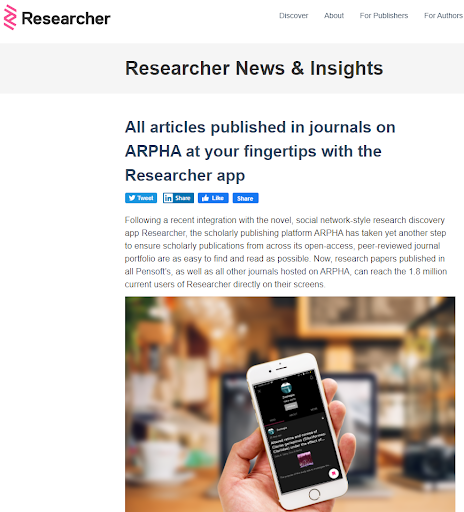
Use case II: As we’ve always been taking special care to ensure that content published in ARPHA-hosted journals enjoys as much visibility and accessibility as possible, we couldn’t allow ourselves to stay away from yet another fantastic way to reach further into the readership of our clients. So, last year, we signed up with Researcher, whose research-discovery app allows its users to browse and receive a continuous feed of the latest research publications addressing their topics of interest. Having added the integration to all journals published on ARPHA platform by default, their content reaches more than two millions users on Researcher.

